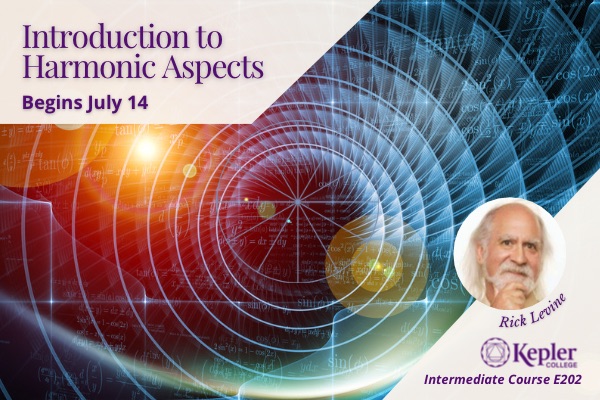
This course revisits the theoretical basis and the evolution of aspects in astrology, presenting harmonic aspects in a practical and usable framework. Relying on astrological basics with concepts from sacred geometry, students will be taught to integrate aspects based upon non-zodiacal relationships, including quintiles, septiles, octiles, noviles and more. These harmonic aspects widen the astrological palette and enable the astrologer to quickly find previously hidden dimensions of personality.
Students will learn:
- How to integrate harmonic aspects into basic chart analysis.
- To present a solid rationale for using harmonic aspect.
- To demonstrate the efficacy of harmonic aspects.
- To bring harmonic aspects down to earth.
- To develop practice based upon established theory.
Weekly Topics:
- Course overview. The historical perspective: evolution of aspect theory. Aspects as harmonics. The shift from discrete planetary points to vibratory hum. The difference between harmonic charts and harmonic aspects. Introduction to the fundamental harmonic aspects. The role of midpoints in harmonic resonance. Physical and metaphysical aspects. Aspects and gender bias. Revisioning orbs.
- Review of zodiacal aspects, inconjuncts, and non-Ptolemaic aspects. Working with the 8th harmonic aspect series. Oppositions, squares, and octiles (semisquares and sesquisquares). Octile configurations. Oppositions with the Point of Thor and Point of Thales. Thor's Hammer. Chart examples.
- Introducing the 5th and 7th harmonic aspects (quintiles & septiles). Quintiles, the Venus star, and the golden mean. Quintiles, deciles, and creativity. Septiles, fate, and metaphysical complexity. Quintile & septile configurations. Quintile yods and septile yods. Oppositions with the Point of Fibonacci and the Points of Fate. How quintiles and septiles quickly reveal hidden dimensions of a natal chart. Chart examples.
- Introduction of the 9th and 11th harmonic aspects (noviles and elftiles). Noviles and superconductivity. Novile configurations that stimulate trines. Elftiles and the outsiders. Elftile configurations that stand alone. Chart examples.
- Putting it all together. Bringing harmonic aspects into natal chart consultations. Evaluating harmonic resonance. Symmetry and complex patterns. Topics for further exploration. Chart examples.
Recommended Texts:
There are no required readings for this course. However, here is a list of suggestions for further study:
- The Language of Uranian Astrology by Roger A. Jacobson
- Astrological Aspects: A Process Oriented Approach by Leyla Rael and Dane Rudhyar
- A Handbook for the Humanistic Astrologer by Michael R. Meyer
- Harmonic Astrology in Practice by David Hamblin
- Harmonic Charts: A New Dimension in Astrology by David Hamblin
- Working with Astrology: The Psychology of Midpoints, Harmonics, and Astro*Carto*Graphy by Michael Harding and Charles Harvey
- Vibrational Astrology: The Essentials by David Cochrane
- Harmonic Anthology by John Addey
- Harmonic in Astrology by John Addey
Prerequisites:
Solid fundamental knowledge of astrological basics—planets, signs, houses, Ptolemaic aspects.
- Teacher: Rick Levine
- Teaching Assistant: Gail Goldberg
